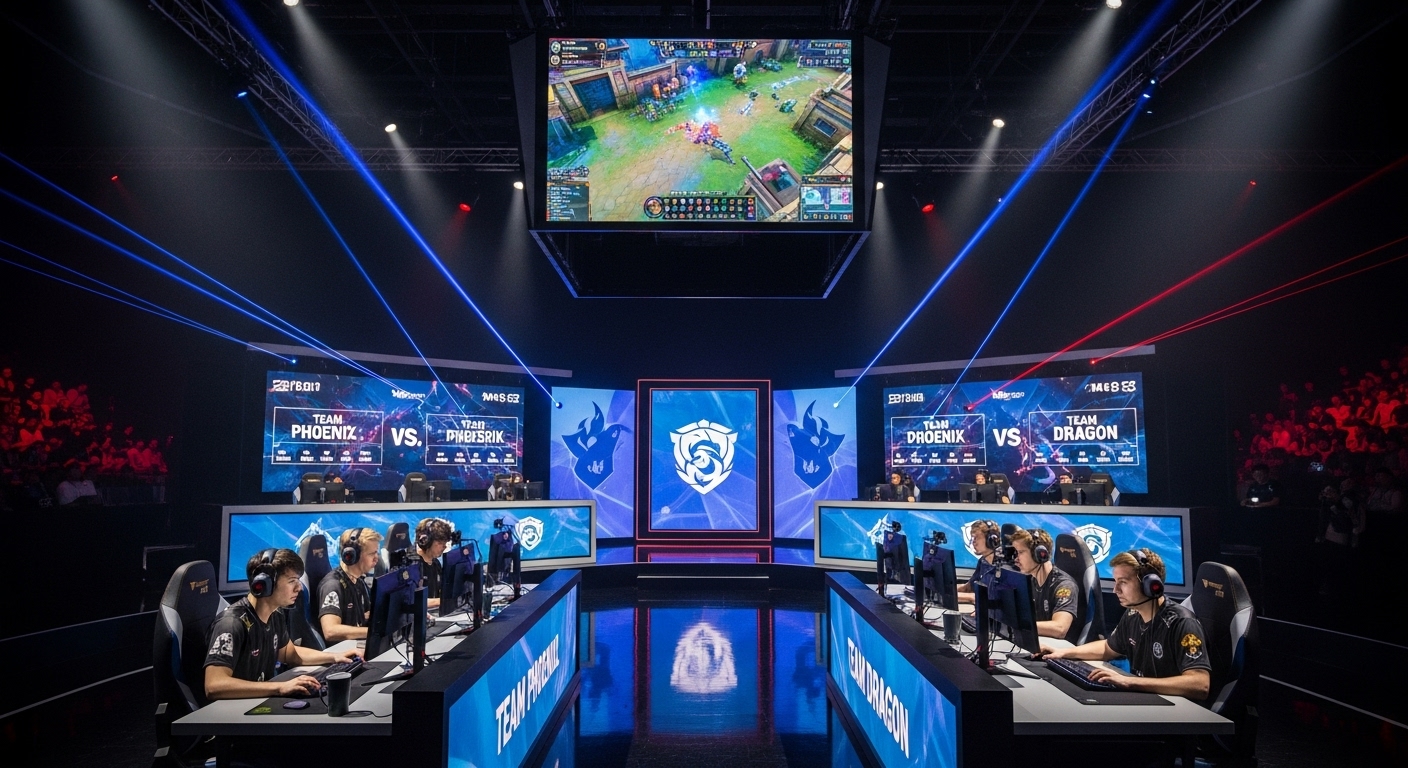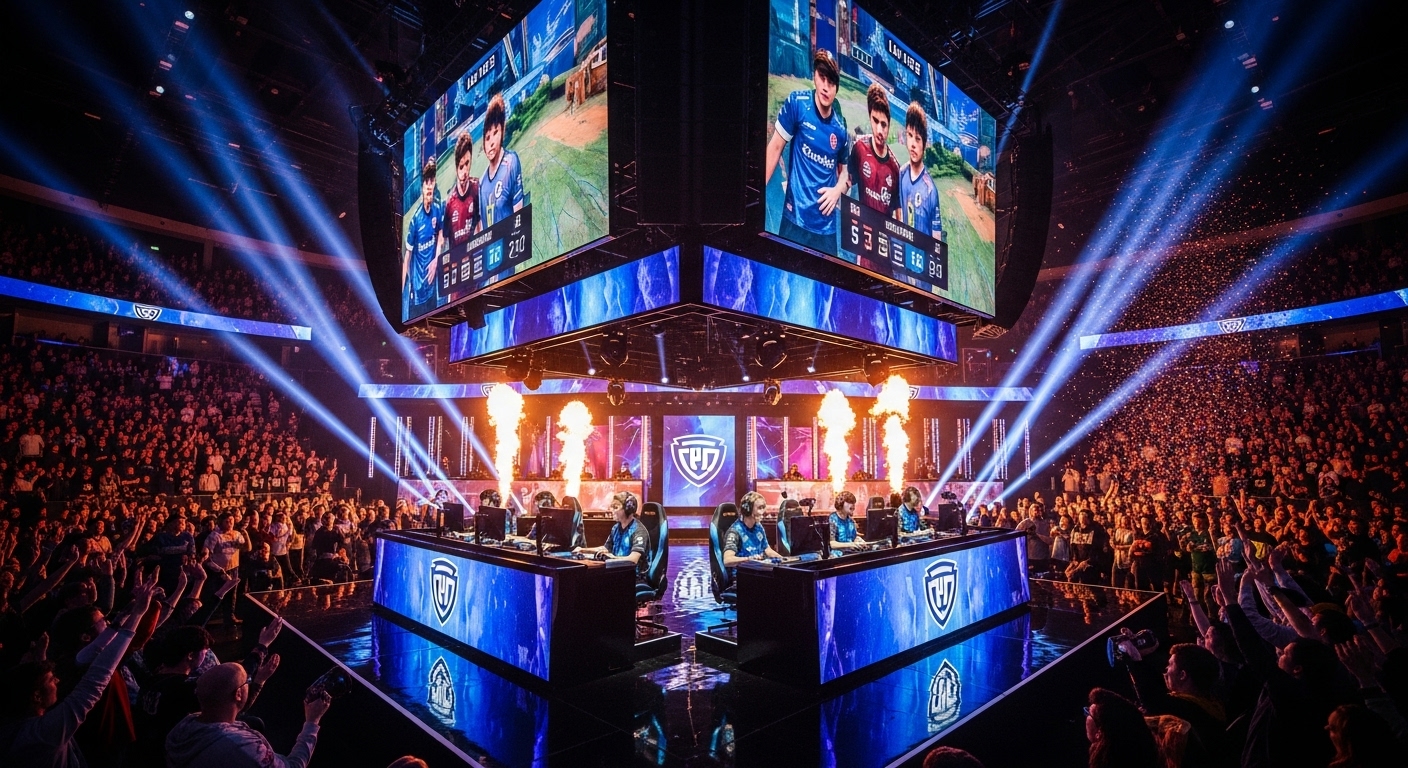Introduction: The Dawn of a New Era in Competitive Gaming
Once dismissed as a casual pastime, video gaming has evolved into one of the most dynamic and influential industries in modern entertainment. Esports, or electronic sports, has transformed gaming into a global phenomenon where skilled players compete professionally for fame, fortune, and prestige. What began as small-scale competitions among hobbyists has become a billion-dollar industry, complete with massive arenas, sponsorships, and millions of fans watching from around the world. Esports is not just reshaping how people view gaming—it is redefining what it means to be an athlete in the digital age.
The Origins of Esports: From Local Arcades to Global Arenas
The roots of esports stretch back to the early days of video gaming in the 1970s and 1980s. The first recorded gaming competition took place at Stanford University in 1972, where players competed in the game “Spacewar!” for a year’s subscription to a magazine. While humble by today’s standards, it marked the beginning of organized competitive gaming.
By the 1990s, the rise of personal computers and the internet fueled the growth of multiplayer games such as “Doom” and “Quake.” LAN parties—where players connected computers locally to battle in real-time—became a cornerstone of competitive gaming culture. As broadband internet spread, online tournaments began to take shape, allowing players from different parts of the world to compete without physical proximity. The late 1990s and early 2000s saw the birth of iconic esports titles such as “StarCraft,” “Counter-Strike,” and “Warcraft III,” which became the foundation for the modern esports scene.
The Esports Explosion: When Gaming Went Mainstream
The 2010s marked the true explosion of esports into mainstream culture. Games like “League of Legends,” “Dota 2,” and “Overwatch” attracted millions of players and viewers. Major tournaments such as The International, the League of Legends World Championship, and the Fortnite World Cup offered prize pools in the tens of millions of dollars, rivaling traditional sports championships.
Streaming platforms such as Twitch and YouTube Gaming played a crucial role in this rise. These platforms allowed fans to watch live matches, follow their favorite teams, and engage with players in real-time. Esports was no longer confined to niche gaming communities; it became a global spectacle that drew the attention of major brands, investors, and broadcasters. Traditional sports organizations, including football and basketball teams, began investing in esports franchises, further legitimizing the industry.
The Players: New-Age Athletes of the Digital World
Professional esports players train with the same dedication and intensity as athletes in physical sports. They spend hours each day practicing, analyzing gameplay, and developing strategies with their teams. Reaction time, precision, teamwork, and mental endurance are crucial components of success.
Many players begin their careers in their teenage years, often balancing school with rigorous practice schedules. By their early twenties, some have achieved celebrity status, earning sponsorships, streaming revenue, and fan followings that rival popular musicians or movie stars. However, the career of an esports athlete can be short-lived due to burnout, repetitive stress injuries, or shifting game metas. As a result, the industry is seeing increasing emphasis on physical health, mental well-being, and sustainable career development for players.
The Games That Define the Scene
Esports is not confined to one genre or platform. It spans a wide array of games that each attract unique audiences and competitive structures.
Multiplayer Online Battle Arenas (MOBAs) like League of Legends and Dota 2 dominate the competitive scene with complex strategies and team-based play. These games require coordination, timing, and deep understanding of game mechanics.
First-Person Shooters (FPS) such as Counter-Strike: Global Offensive, Valorant, and Call of Duty emphasize precision, reflexes, and tactical teamwork.
Battle Royale Games like Fortnite and PUBG brought a new twist to competitive gaming, with large-scale, last-player-standing matches that combine survival and shooting skills.
Sports Simulations such as FIFA and NBA 2K blend the worlds of traditional sports and gaming, attracting fans from both sides.
Fighting Games like Street Fighter, Tekken, and Super Smash Bros. retain a passionate following, celebrated for their one-on-one duels and technical mastery.
Each genre contributes its own culture, fan base, and iconic moments, enriching the tapestry of the esports ecosystem.
The Business of Esports: A Billion-Dollar Industry
Behind the screens and flashing lights lies a sophisticated business structure. Esports is now a multi-billion-dollar industry driven by sponsorships, advertising, media rights, and merchandise. Major corporations sponsor teams, events, and even individual players to reach the coveted youth demographic.
Event organizers generate revenue through ticket sales, broadcasting deals, and exclusive streaming rights. Cities around the world are investing in esports arenas and training facilities, recognizing the tourism and economic potential of hosting large tournaments.
Esports organizations function much like traditional sports clubs, complete with management teams, coaches, analysts, and marketing departments. Some of the most successful teams have diversified into content creation, merchandise lines, and influencer marketing to sustain their brands beyond the competitive circuit.
The Role of Technology and Streaming Platforms
Technology has been the backbone of esports’ meteoric rise. High-speed internet, powerful gaming PCs, and streaming platforms have connected players and audiences across continents. The accessibility of streaming has democratized viewership—anyone with an internet connection can tune in to a live match or replay highlights.
Platforms like Twitch, YouTube Gaming, and Facebook Gaming have created new stars and communities. Streamers not only entertain but also bridge the gap between professional esports and casual gaming. The integration of virtual reality (VR) and augmented reality (AR) promises to add new dimensions to esports events, offering immersive experiences that could redefine how audiences engage with competitive gaming.
Esports and Education: A Pathway to New Careers
Esports is increasingly being recognized as a legitimate career path and educational opportunity. Many universities around the world now offer esports scholarships, dedicated courses, and degrees focused on game design, event management, and digital media. High schools are forming esports clubs to teach teamwork, problem-solving, and digital literacy.
Beyond playing professionally, the esports industry offers diverse roles including coaching, commentary, broadcasting, data analysis, marketing, and production. As the sector grows, it continues to create thousands of jobs, merging technology, entertainment, and creativity in new ways.
Cultural Impact: Changing Perceptions of Gaming
Perhaps one of the most profound effects of esports has been its impact on cultural perception. Once stigmatized as an antisocial or unproductive hobby, gaming is now celebrated as a legitimate form of entertainment and competition. Esports tournaments fill arenas once reserved for concerts and sports events, and gamers are viewed as icons of digital culture.
Esports has also played a role in fostering global connections. Players and fans from different countries and backgrounds unite under a shared passion, transcending language barriers through gameplay and community. It has become a medium of expression, collaboration, and identity for a new generation.
Challenges Facing the Esports Industry
Despite its rapid rise, esports faces several challenges that must be addressed to ensure sustainable growth. One of the biggest issues is player burnout. The intense schedules, pressure to perform, and lack of work-life balance can lead to physical and mental strain.
Another concern is regulation and governance. Unlike traditional sports, esports lacks a single governing body to oversee tournaments, player contracts, and integrity standards. This can lead to issues such as match-fixing, unfair practices, or inconsistent rules across different organizations.
Diversity and inclusion also remain important topics. While esports is open to anyone with access to technology, female players and marginalized groups are still underrepresented. Efforts are being made to create more inclusive environments and combat online toxicity.
Finally, economic sustainability is a key question. As prize pools and sponsorships grow, the industry must ensure that revenue distribution supports players, smaller teams, and grassroots initiatives—not just major organizations.
The Future of Esports: A New Frontier of Entertainment
Looking ahead, esports shows no signs of slowing down. Advances in technology, such as 5G connectivity, cloud gaming, and artificial intelligence, will continue to shape its evolution. Virtual reality could create fully immersive esports environments, while mobile gaming is expected to expand accessibility in emerging markets.
Esports may also become a staple in mainstream sporting events. The idea of esports being included in the Olympics, once controversial, is now being seriously discussed. As generations grow up watching both traditional and digital sports, the line between them continues to blur.
The future will likely see esports merging further with entertainment and pop culture. Collaborations with music, film, and fashion are already common, creating hybrid events that appeal to broader audiences. The next decade could witness esports evolving into a cornerstone of digital entertainment, influencing how we play, watch, and connect.
Conclusion: More Than a Game
Esports represents far more than competitive gaming—it embodies a cultural shift in how we define sport, competition, and community. It has given rise to new heroes, new careers, and new forms of global connection. What once existed in dimly lit arcades has transformed into a worldwide stage of innovation and inspiration.
As technology continues to advance, and as society embraces the digital frontier, esports stands as a testament to human creativity and adaptability. It bridges generations, breaks barriers, and unites millions under the shared language of play. The rise of esports is not the end of traditional sports—it is the expansion of human competition into a new, thrilling dimension. The digital arena has opened, and the world is watching.



